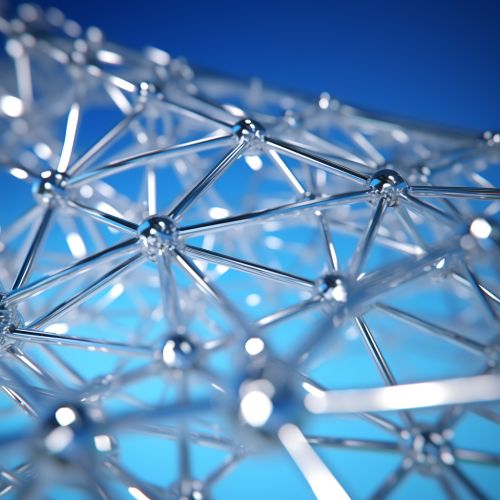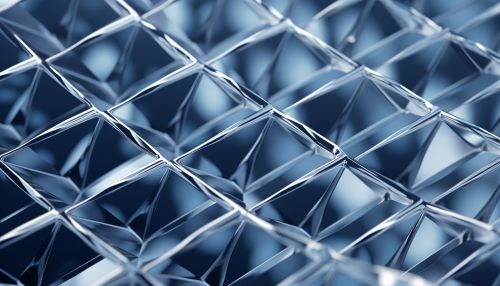Diamond Nitrogen-Vacancy Centers
Introduction
Diamond Nitrogen-Vacancy (N-V) centers are defects in the crystal lattice of a diamond where a nitrogen atom replaces a carbon atom, and an adjacent lattice site is vacant. This unique structure gives rise to a system with fascinating quantum mechanical properties that are being explored for use in a variety of applications, from quantum computing to biological imaging.


Formation of Diamond Nitrogen-Vacancy Centers
Diamond Nitrogen-Vacancy centers are formed when a nitrogen atom replaces a carbon atom in the diamond lattice, and an adjacent carbon atom is removed, leaving a vacancy. This can occur naturally during the formation of the diamond, or it can be induced artificially by irradiation and subsequent annealing. The nitrogen atom and the vacancy form a complex known as a Nitrogen-Vacancy center, which is stable at room temperature and has a spin state that can be manipulated and measured.
Properties of Diamond Nitrogen-Vacancy Centers
The Nitrogen-Vacancy center in diamond is a unique system that exhibits several remarkable properties. It has a ground state with spin S=1, which can be split into three sublevels by the application of a magnetic field. This spin state can be manipulated using microwave radiation, and the spin state can be read out optically, making the N-V center a good candidate for use in quantum computing and quantum information processing.
The N-V center is also highly sensitive to magnetic fields, electric fields, and temperature, making it a powerful sensor. It is also robust, maintaining its properties at room temperature and under ambient conditions, unlike many other quantum systems.
Applications of Diamond Nitrogen-Vacancy Centers
Due to their unique properties, Diamond Nitrogen-Vacancy centers have found a range of applications in various fields.
Quantum Computing
In quantum computing, the spin state of the N-V center can be used as a qubit, the basic unit of quantum information. The ability to manipulate and measure this spin state with high fidelity makes the N-V center a promising candidate for quantum computing.
Magnetic Field Sensing
The N-V center's sensitivity to magnetic fields can be used for magnetic field sensing. This has potential applications in a variety of fields, including geology, where it could be used to measure variations in the Earth's magnetic field, and biology, where it could be used to measure the magnetic fields produced by biological processes.
Biological Imaging
The N-V center's optical properties can also be used for biological imaging. The N-V center emits light when excited by a laser, and this light can be used to image biological samples. The N-V center's robustness and biocompatibility make it a promising candidate for this application.
Challenges and Future Directions
While Diamond Nitrogen-Vacancy centers have shown great promise in a variety of applications, there are still challenges to be overcome. For example, the creation of high-quality N-V centers in diamond is still a difficult and expensive process. Additionally, while the N-V center's sensitivity to magnetic fields is a strength in some applications, it can also be a weakness, as it can make the N-V center susceptible to noise.
Despite these challenges, research into Diamond Nitrogen-Vacancy centers is ongoing, and new applications and techniques continue to be developed. With further research and development, Diamond Nitrogen-Vacancy centers could play a key role in the future of quantum computing, sensing, and imaging.
